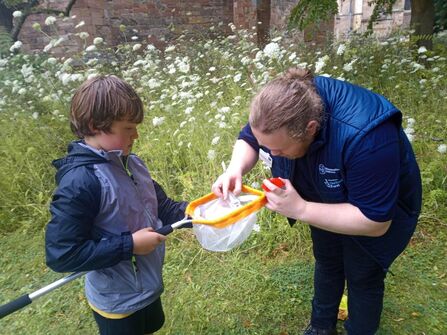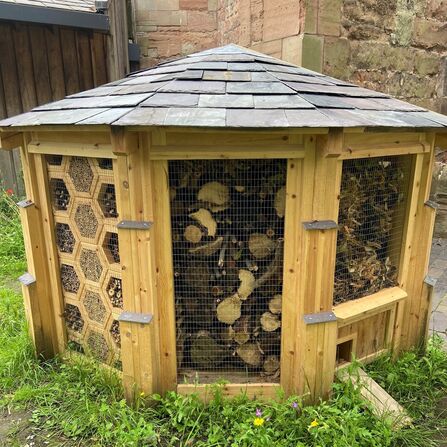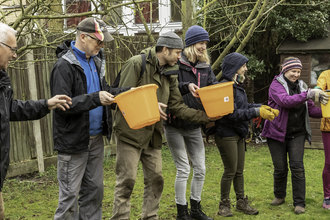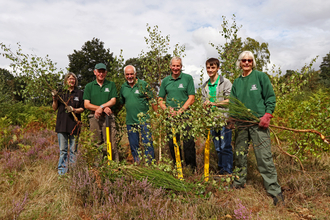The community at Worcester Cathedral are true local champions in looking after the wildlife we're so lucky to have around us in the city of Worcester.
Worcester Cathedral Eco Group

Searching for minibeasts
Much of this fantastic work is propelled by the hard working people that represent the Cathedral Eco Group. The cathedral has set a goal for 2025 of being “a catalyst for campaigning and awareness on the environment and social justice”. This vitally important mission has led to the Eco Group becoming a voice for environmental campaigning and awareness in the city. They collaborate with other environmental and nature conservation groups (such as us at the Trust) to make themselves a shining example of how to look after the world around us. Hopefully this will help the cathedral to achieve a couple of their long-term environmental goals, specifically working towards the Eco-Church Gold standard (they received Silver for their environmental work in 2023) and net-zero carbon emissions by 2030.
Best of all, it's easy to see the fruits of the group's labour when you visit the cathedral. There are a number of wildlife-focused areas around the site that really illustrate the importance of the work that the Eco Group undertakes. Lets take a closer look.
Peregrine falcons
One of the most exciting wildlife sights you can see in Worcester is the pair of peregrines, Peter and Peggy, that nest on the cathedral's tower. The pair have nested their since 2022, and have since raised eight successful chicks from this lofty viewpoint. Peregrines favour high vantage points (like cathedral towers) because they mimic their natural cliff‐face habitats, so the space that the team at the cathedral has made for these birds has really helped those of us in the city get a little closer to some of our most impressive native wildlife. If you visit the tower (or look up while nearby) you may be lucky enough to spot them.
Lesser horseshoe bats
Lesser horseshoe bats are one of our smallest native bats and are most commonly found in rural settings where they prefer to nest in caves and similar areas to protect themselves from the cold. As with many species, they've been badly affected by habitat loss and reduced food options over the last century, so the rare urban colony that has taken roost at Worcester Cathedral are an incredibly important conservation opportunity. This shows the importance of making and keeping spaces for wildlife in our towns and cities whilst also allowing us to monitor and appreciate these amazing creatures.

Bug hotel by Connor McGoldrick
Insects and minibeasts
The Eco Group and Head Gardener, Dave Whelan, have been instrumental in the creation of a small wildflower meadow and bug hotel next to the college green on the south side of the site. This has created a large, high quality habitat to support the insects and small mammals that form the base of so many food webs. The subsequent increase in biodiversity can be seen very easily in spring and summer, where this part of the cathedral grounds is abuzz with invertebrate activity. Habitats like these are incredibly important in supporting our local wildlife and the group has done excellent work in making space for the smallest members of our ecosystems.
All of these success stories are examples of the ways in which the cathedral team and it’s Eco Group are actively championing wildlife in our city and county. All of this provides opportunities to connect with nature in the heart of the city, rather than assuming that wildlife is something that only occurs in the countryside. From the important wildlife refuges that the cathedral hosts to the litany of options to get locals involved and engaged with our native nature, Worcester Cathedral and the Eco Group are leading the way in urban conservation and we hope to continue supporting them in achieving their goals in any way we can.
If you're interested in learning more about the cathedral’s nature conservation efforts, and the work that the Eco Group does, please visit the Worcester Cathedral website to learn about their journey from their perspective.
If this story has piqued your interest in supporting nature conservation and connectedness, feel free to look at our own volunteering opportunities to see if there is a way you can get involved in nature's recovery closer to your home.




